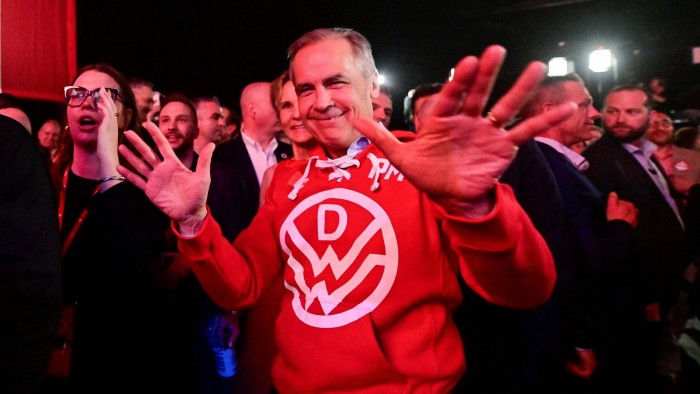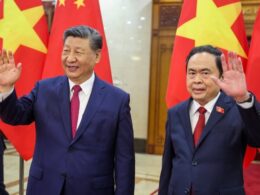Unlock the White House Watch newsletter for free
Your guide to what Trump’s second term means for Washington, business and the world
Donald Trump has proved he can swing elections outside the US — against himself. Without the US president’s tariffs and annexation threats against Canada, it is inconceivable that Mark Carney’s Liberals could have come from 25 points behind a few months ago and swept to a fourth successive election victory. The leader of previously front-running Conservatives, the Trump-inspired Pierre Poilievre, lost his seat. Canadians favoured a slick, internationalist central banker who is in many ways the anti-Trump as the leader best equipped to take on the man in the Oval Office. For Carney, though, winning may prove the easy part.
Mainstream parties elsewhere will cheer Canada’s liberal swing as a sign that their brand of politics can still prevail in the age of Trump. It suggests the return of Trump’s Maga populism will not necessarily prompt a wave of rightwing victories but could spur a backlash. Australia’s incumbent Labor Prime Minister Anthony Albanese may also see off a rightwing challenge on Saturday. Centre-left leaders could face calls to stand up to Trump rather than play nice; nationalist populists will fret that being too closely associated with him could backfire. Indeed the president’s ham-fisted, election-eve post urging Canadians to embrace being the “cherished 51st state” suggests Trump has little interest in compromises to help out would-be Trumps abroad.
Yet centrist celebration should be restrained. Canada’s deep economic dependence on America and Trump’s direct menace to its sovereignty make it a special case. The Liberals’ almost 44 per cent vote was also a narrower victory over the Conservatives’ 41 per cent than the polls had projected; smaller parties were the big losers. A Conservative vote that was the highest for any right-of-centre party since 1988 shows how many Canadians still distrust the Liberals, and looked to the Conservatives and Poilievre to deal with Trump.
Carney’s Liberals may fall just short of a parliamentary majority, complicating his two key tasks. The first, through a delicate combination of inducements and retaliation threats, is to seek a fair, renegotiated trade deal with Trump to reduce the tariff harm to Canada — or to steel Canadians to withstand the pain if the US president plays hardball. The second predated Trump’s return, but has been made only more urgent: to boost productivity and diversify Canada’s economy and trade away from its reliance on America.
Lagging productivity is making it harder, as in Britain, to fund public services without increasing an already hefty tax take. Reducing the cost of living, and especially housing, that loomed large in the election must also mean streamlining regulations to enable more homes to be built. Modernising Canada’s infrastructure can increase economic efficiency and, if more of it runs east-west rather than north-south, enhance its capability to export overseas.
Yet along with finding new markets, Canada must reduce interprovincial trade barriers that complicate the movement of goods and people, and result in provinces exporting more to the US than they do among themselves. Carney will have to balance, too, his commendable enthusiasm for accelerating the green energy transition with demands to continue developing Canada’s oil and gas industry as an economic strength.
Carney will benefit from a growing consensus in favour of unlocking Canada’s economic potential to safeguard its independence and prosperity, but the goodwill surrounding his election may soon dissipate. He has handled economic crises as a banker, but never as prime minister — or in any elected office. In a real sense, Carney has Trump to thank for putting him there. Now he has to prove he can indeed see off the threat from the White House.
Source link









